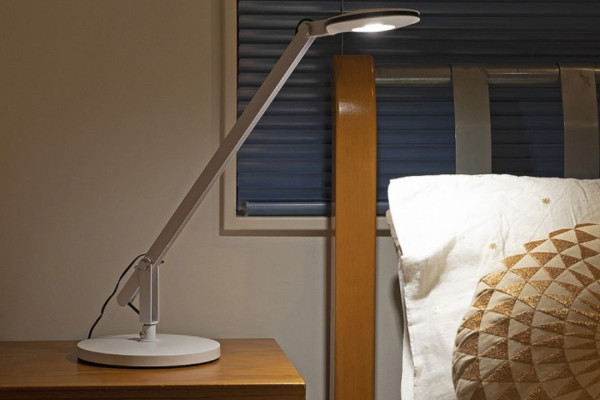Home »
Info Centre » Colour Temperature Guide
COLOUR TEMPERATURE GUIDE
From bright and crisp, to warm and cosy - the colour temperature of a light source can change the ambience and influence the feel and functionality of a room. So finding the right colour temperature for you and your space is crucial.

What is Colour Temperature?

- Color temperature refers to how cool or warm the light emitted from an LED bulb or fitting is.
- It is measured in degrees of Kelvin (K) on a scale from 1,000 to 10,000.
- The higher the Kelvins, the cooler the light is.
- Typically Colour Temperatures for residential applications fall between 2,500K to 5,000K.
- For commercial applications, the range generally falls between 2,500K to 8,000K.
What Colour Temperature Should I Use?
- Understanding the Kelvin Scale can help you make better lighting choices for your space:
- Colour temperatures up to 3,000K produce what is called “warm white” and ranges from orange to a yellowish-white in appearance.
- Color temperatures between 3100K and 4500K are known as “cool white” (also referred to as Neutral White), and produce a more neutral white light.
- LED Bulbs and fittings with 4500K or higher colour temperatures are referred to as "daylight”, and often emit a blue-white light that mimics daylight.
- There is no 'one colour temperature fit's all' solution to picking the right colour temperature. The colour temperature you choose, has a direct impact on the ambience and functionality of a room.
- Warm White colour temperatures are best suited to creating a cosy, warming, relaxing environment in a space. Ideal in residential settings for use in bedside lighting, reading lights, mood lighting in bathrooms, decorative pendants and for general residential lighting.
- Neutral White colour temperatures are great for creating a welcoming and functional ambiance to the room. Ideal for use in bathrooms as vanity or mirror lighting, kitchen spaces as general room lighting, or entryways to create that open and inviting first impression.
- Daylight colour temperatures provide a much more crisp and bright light, so are best suited to flood/security lighting, exterior pathway lighting etc. They also work well in garages or basements, or in areas where high visibility but not colour rendition are required.

Navigation
- Outdoor Lights Materials and Finishes Guide
- Lamps – Light Sources
- Control Gear Information & Trouble Shooting
- IP Rating Chart
- Declaration of Compliance with Standards
- Bulb Terminology and Identification
- 12Volt DC Supply LED Strip & Module Planning
- Advantages of the Superlux LL and LLED Garden Lighting system
- 12 Volt Garden Lights
- The Different Purposes Of Lighting
- Lighting For Different Areas
- A Guide To Installing Lights
- Energy Efficient Lighting
- Colour Temperature Guide
- CRI: Colour Rendering Index
- Uniform Downlight Spacing Formula
- Downlight Classification Guide
- Lumens: What Are They And How Much Do I Need?
- Lux: What is it And How Much Do I Need?
- Globes With 60mmØ Fitter Included
- How Do Sensor Lights Work?
- What To Do If I Have Moisture Build Up In My Light Fixture?
- Latest News
